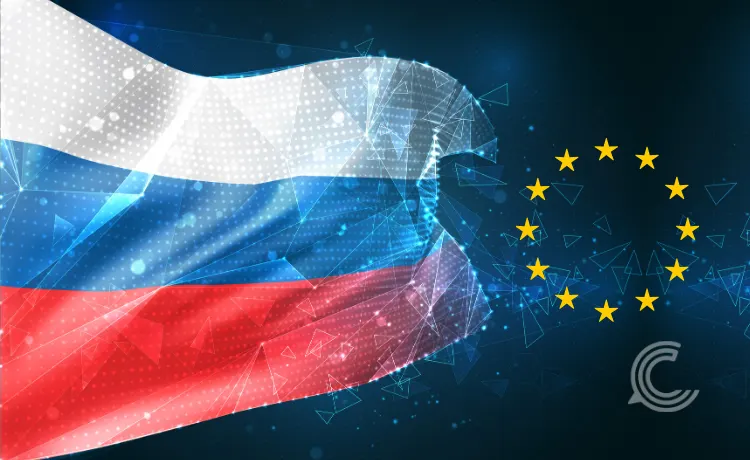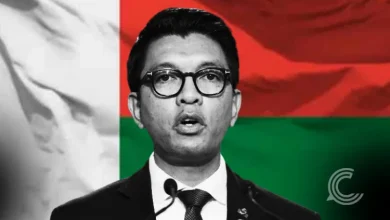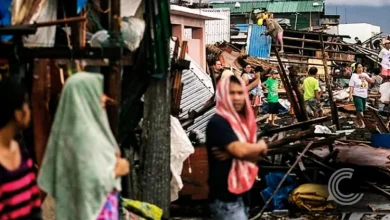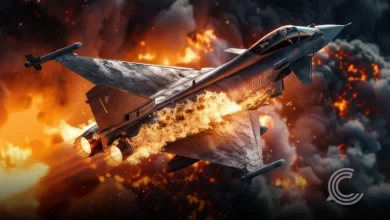EU Vows Sustained Financial Lifeline to Ukraine Amid Dispute Over Russian Assets

Key Highlights-
- The EU committed in principle to cover Ukraine’s financial needs for 2026 and 2027, ensuring long-term support.
- A proposal to use Russian frozen assets as collateral for a €140 billion loan to Kyiv is facing resistance from Belgium over legal and risk-sharing concerns.
- EU leaders formally approved a 19th package of sanctions against Russia, including a ban on its liquefied natural gas (LNG) imports.
The European Union Council chief, Antonio Costa, made a definitive declaration on Thursday: the bloc will agree in principle to provide Ukraine with the necessary financing for the next two years. Arriving at a crucial summit of EU leaders in Brussels, Costa stated, “We will take the political decision to ensure the financial needs of Ukraine for 2026 and 2027, including for the acquisition of military equipment.” This commitment underscores Europe’s resolve to offer stable and predictable financial support, particularly as uncertainties regarding aid from other global partners emerge.
The announcement comes amidst the backdrop of the EU’s multi-year support mechanism, the Ukraine Facility, which is designed to provide up to €50 billion between 2024 and 2027 to aid Ukraine’s recovery, reconstruction, and modernisation efforts, as reported by the European Commission. This is a vital lifeline to ensure the Ukrainian government can maintain essential public services.
EU Eyes Frozen Russian Assets
The proposed financial support is intricately linked to an ambitious, and contentious, plan to leverage immobilised Russian frozen assets to secure a potential €140 billion loan for Kyiv. The majority of these assets, estimated to be around €183 billion, are held in the Belgian central securities depository, Euroclear, placing Belgium at the heart of the legal debate.
Belgian Prime Minister Bart De Wever laid out firm conditions for the plan’s advancement. “If demands are met, we can go forward. If not I will do everything in my power at the European level, also at the national level, politically and legally to stop this decision,” De Wever stated on arrival at the summit.
His principal demand centers on a full sharing of risk among all EU members. This means all member states would collectively cover the costs of any legal action pursued by Russia or contribute financially if the money ever had to be repaid.
Demands for Transparency and Collective Risk
De Wever also insisted on greater clarity regarding the legal basis for the move and demanded that Russian frozen assets held in other EU member states be included in the scheme. “There must be transparency about the risk. There must be transparency about the legal basis for this decision,” he stressed.
The caution reflects deep-seated concerns over the precedent of using sovereign assets in this manner, which some fear could destabilize the global financial system and invite retaliation from Moscow. The leaders are expected to formally task the European Commission with developing a concrete legal proposal for the frozen assets plan, with officials hoping a detailed text can be finalised soon.
The EU is exploring a mechanism where the loan is secured on the Russian Central Bank assets, and Ukraine would only repay the loan once Russia compensates it for the war damage. However, the legal and financial risk of Russia refusing to pay reparations or challenging the move remains the key obstacle requiring a consensus on collective responsibility among the 27 member states.
New Sanctions Target Russia’s Energy Sector
In a separate but highly significant move, the European Union formally approved a 19th package of sanctions against Russia. Ukrainian President Volodymyr Zelenskiy, who was at the summit, received this as a tangible boost to his country’s defence efforts. The new measures are designed to increase pressure on Russia’s war economy and include a ban on Russian liquefied natural gas (LNG) imports, which will be fully phased in by January 1, 2027.
Furthermore, the package introduces new measures against Russia’s shadow tanker fleet, a clandestine armada of older vessels used to circumvent the G7 oil price cap. The EU has added 117 more vessels to its sanctions list, banning them from accessing EU ports and services, as reported by The Guardian. The sanctions also target key Russian financial and energy entities, aiming to curb Russia’s ability to finance its aggression against Ukraine.



